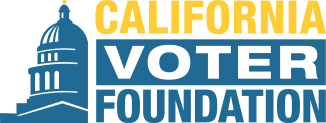Excerpts:
“Are you here to vote?” Arianna asked two men and a woman approaching the basement entrance to the Hollywood Hotel’s ballroom in Los Angeles. “Just go in and make a right. Tell them if you’re dropping off your ballot so you don’t have to wait.” In less than 15 minutes, the three voters strode back out of the doorway and up the steps to the street, “I Voted” stickers on display.
“There really are so many ways to safely vote here in LA County,” Arianna, a 30-year-old poll volunteer, told WhoWhatWhy. “In my opinion, there really is no good excuse to not get out there and exercise your right to vote.”
Not all Americans have it so easy. In the last 10 years, half of the states have actually made it harder for their citizens to vote, according to a study by the Brennan Center for Justice, a nonpartisan law and policy institute. They’ve enacted stricter ID laws, created registration hurdles, and limited early voting and mail-in voting. Sixteen states still require an excuse — such as a medical issue or absence from the precinct — to vote by mail. Five of those, including Texas and Indiana, do not recognize the fear of contracting COVID-19 as a valid reason to vote from home. Some studies indicate that Mississippi voters have the hardest time of all: They can’t vote early in person, they can vote by mail only if disabled or away from their home precinct, they can’t register online, and if they register by mail they have to do it at least a month before elections.
By contrast, California has expanded its already inclusive voting policies to acknowledge difficulties caused by the pandemic. As a result, its voting practices could serve as a model for the rest of the US.
- - - - - - -
Mail-in voting. All registered Californians can vote by mail without an excuse, whether they post their ballot or use a drop box. Beginning in 2001, the state introduced apermanent vote-by-mail registry now used by close to 60 percent of the state’s voters. In 2018, more than 8.3 million Californians, nearly 66 percent of the total, voted by mail. Nationwide, just 24 percent did so.
This year, as a public-safety measure, all California voters received a vote-by-mail ballot, which they’ve been able to mail in or drop off since October 5.
“I think that California has made casting vote-by-mail ballots very accessible to voters in ways that other states do not,” said Kim Alexander, president of the California Voter Foundation, a nonprofit organization dedicated to improving the election process for voters. “I appreciate that our governor and legislature and secretary of state all moved very quickly and early to come up with a plan. The counties have known since June about both safe voting and in-person voting, so I think it was the right decision to mail everyone a ballot and give voters those options.”
California voters can verify their signature until two days before the 30-day deadline that states have to certify their election numbers. If they fail to sign their ballot envelope, they have until eight days after the election to submit an unsigned ballot statement. Only one other state, New Jersey, is as lenient. Thirteen other states have shorter deadlines for curing, and 35 states allow no curing at all.
According to the California Voter Foundation study, 54 percent of ballots rejected for a signature problem were cured, resulting in thousands more votes being counted.
A wide timeframe. This year, California expanded the window for receiving ballots. Although ballots still have to be postmarked by November 3, they’ll now count if received up to 17 days after the election.
Kim Alexander’s greatest concern is that ballots won’t be postmarked in time. The most common reason for rejection in the ballots she and her team studied was a postmark the day after the election. She believes that many voters placed ballots in mailboxes on election day but they weren’t collected until the next day. (Full Story)

